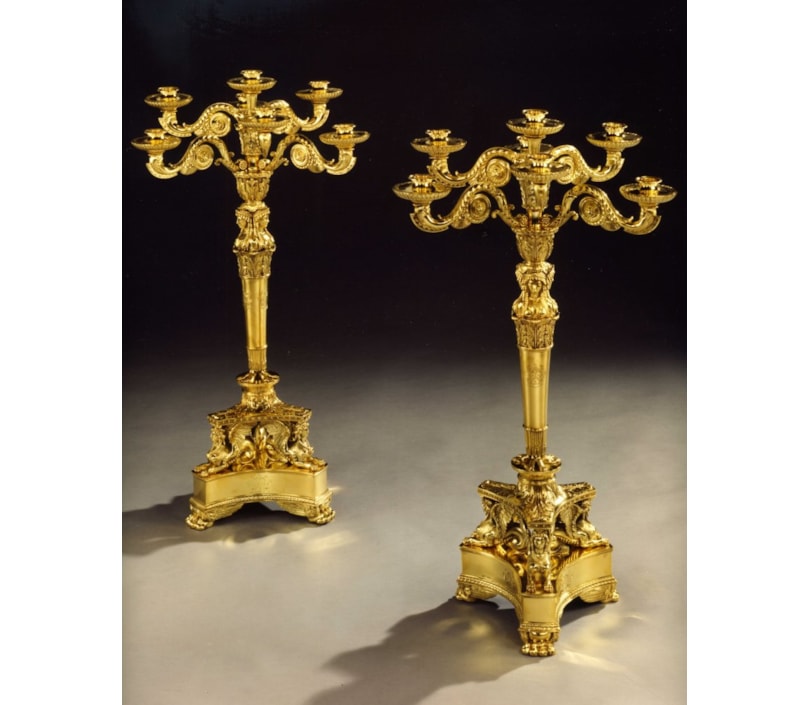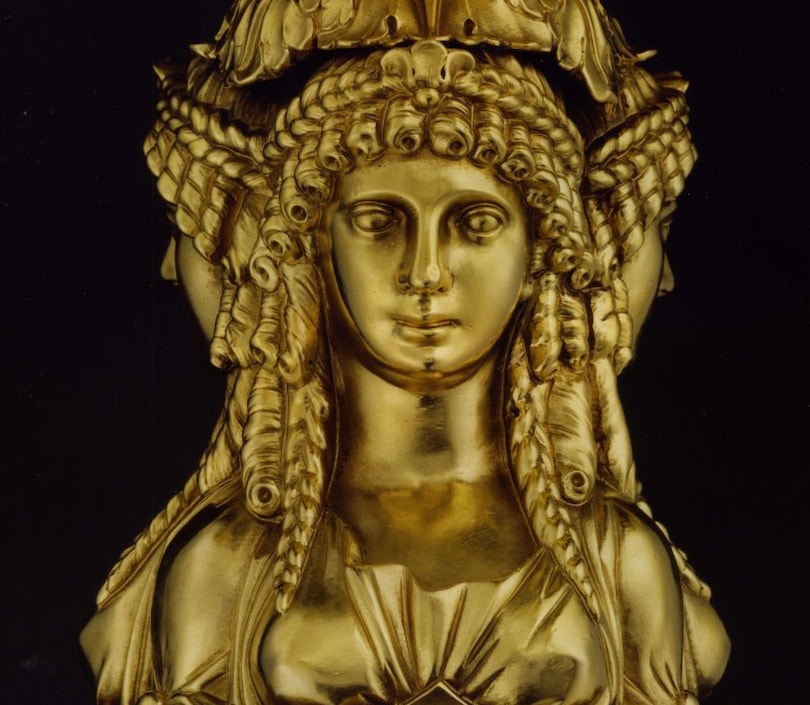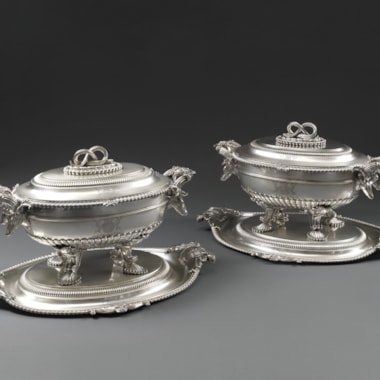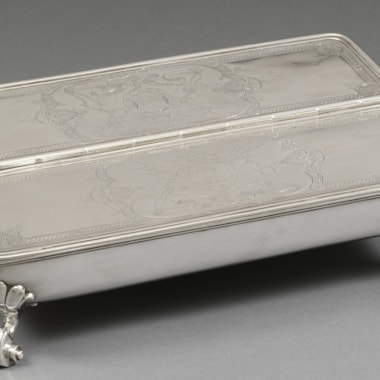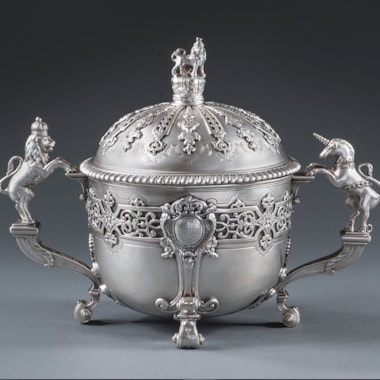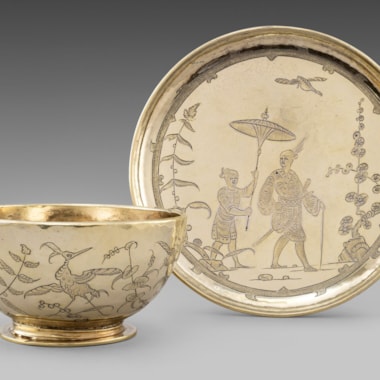A Magnificent pair of The three-sided plinth base of each massive seven-light candelabrum rests on three lions’ paw feet, with sphinxes above. The tapering circular section stem is set on a base of acanthus, with three pairs of feet at the bottom of the stem and a wide band of acanthus at the top with three female classical busts above and an acanthus socle. Each scrolling branch is decorated with matted foliage, palmettes and roundels containing lions’ masks and terminating in stylised dolphins’ heads, with detachable fluted wax pans and reeded nozzles. The stem is engraved with a coat of arms, crest and motto and the wax pans with a crest and motto.
The arms are those of Coote for Sir Charles Henry Coote (1792-1863), 9th Baronet, of Castle Cuffe, Queens County, who succeeded to the baronetcy in 1802 on the death of Charles Henry, 6th Earl of Montrath.
“The caryatid candelabrum was one of Rundell, Bridge and Rundell’s grandest lines in lighting equipment ... Most were originally supplied either to royalty or to the aristocracy” (Timothy Schroder, The Gilbert Collection of Gold and Silver, 1988, p. 356). The form was produced over a period of about twelve years, from 1804-15; other examples with variations in their design include a set of twenty-four at Windsor Castle (E. Alfred Jones, The Gold and Silver of Windsor Castle, 1911, pl. LXXX) which lack the sphinxes and have feet of a different design.
The catalogue entry for one of the candelabra in the Royal Collection (Jane Roberts (editor), Royal Treasures: A Golden Jubilee Celebration, 2003, p. 262, no. 183) comments “With its fashionable and eclectic mix of Greek, Roman and Egyptian motifs the design [of this candelabrum] was perhaps influenced by the Anglo-Dutch designer and arbiter of taste, Thomas Hope ... [who] did much to promote the Greek revival and Egyptian styles in England”. The design incorporates the sphinxes, classical masks and feet, which Hope used in designs for many of the objects intended for his house in Duchess Street in London which were published in 1807 in his influential book Household Furniture and Interior Decoration. Hope in turn probably took elements such as the sphinxes for the feet from Giovanni Battista Piranesi’s engraving of an antique marble candelabrum which was published in Rome in 1778 (Vasi, candelabra, cippi, sarcophagi, tripod, lucerne ed ornamenti antichi).
A drawing for a cup by Jean-Jacques Boileau, now in the Victoria and Albert Museum) has handles with similar roundels to those on the branches of these candelabra. Boileau also employed sphinxes for a set of four soup tureens of 1802 by Paul Storr which are in the Royal Collection.
A further pair of candelabra from the same set was sold at Christie’s New York on 11th April 1995, lot 234. A single candelabrum of this design together with a pair of four light candelabra, all by Digby Scott and Benjamin Smith and made for the Duke of Sussex, was in the Al-Tajir Collection (Charles Truman, The Glory of the Goldsmith, 1989, p 156, no. 118).
Sir Charles Henry Coote was a colonel in the Queen’s County Militia and M.P. for Queens County from 1821 to 1847 and again from 1852 to 1869. He married Caroline, daughter of John Whaley of Whaley Abbey in 1814 and died in London. In 1812 Coote purchased an estate and Ballyfin House from William Wellesley-Pole, brother of the Duke of Wellington and employed Sir Richard Morrison and his son Vitriuvius to rebuild the house in neo-classical style. The house which still stands was completed in 1826.
Sir Charles Henry Coote, 9th Baronet Cuffe; thence by descent
Sale, Christie’s 17th October 1962, lot 103
You May Also Like



































































